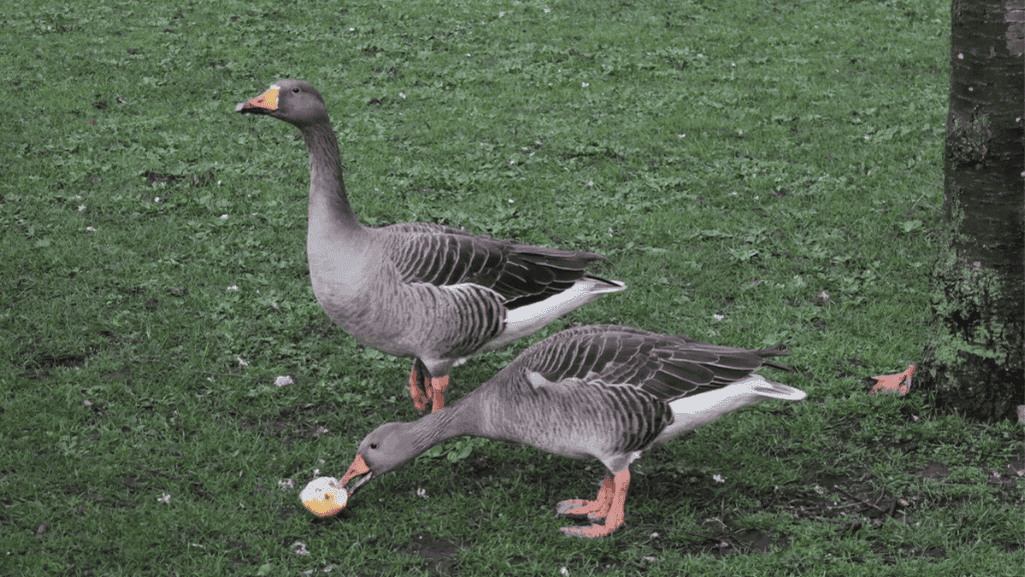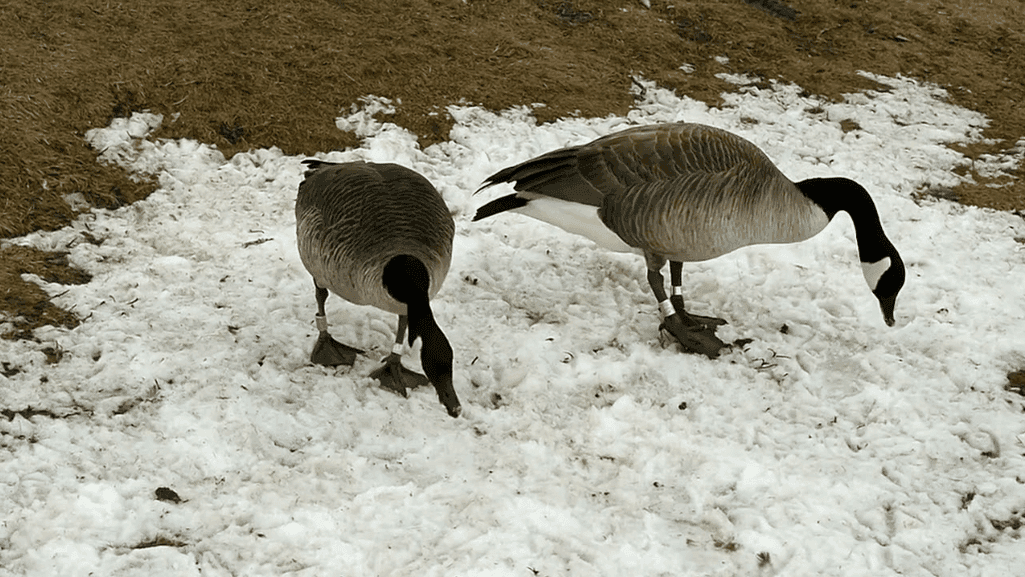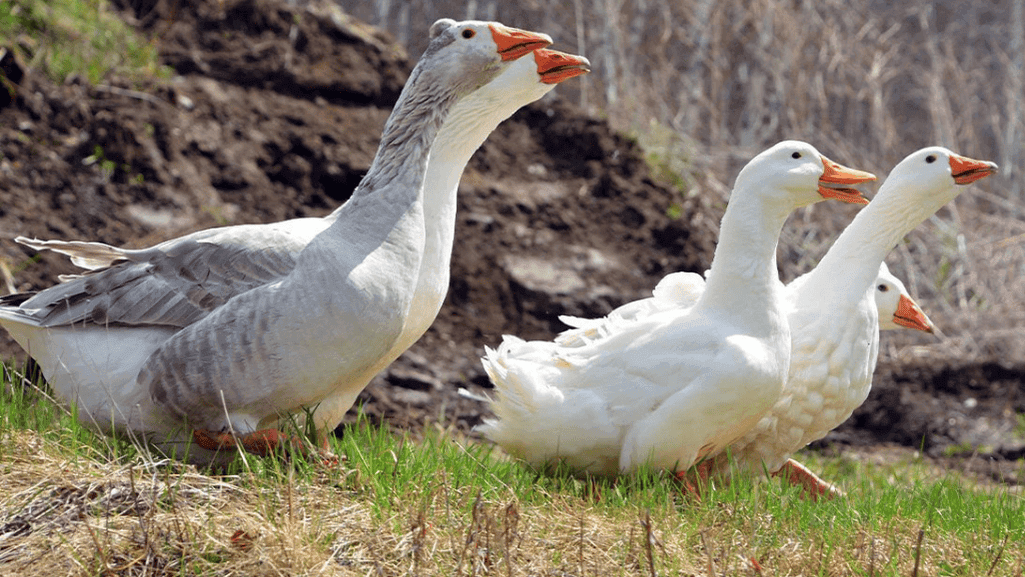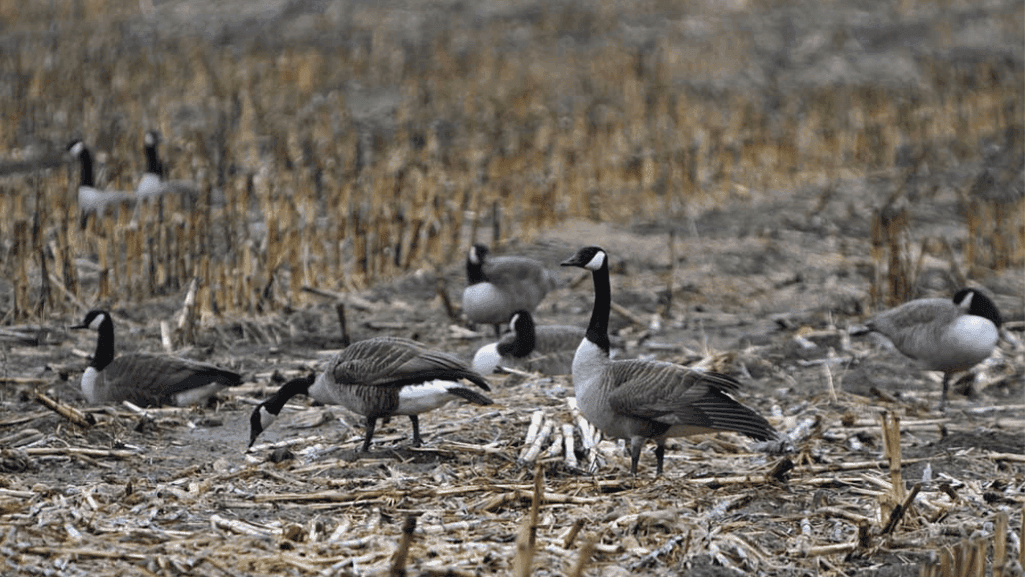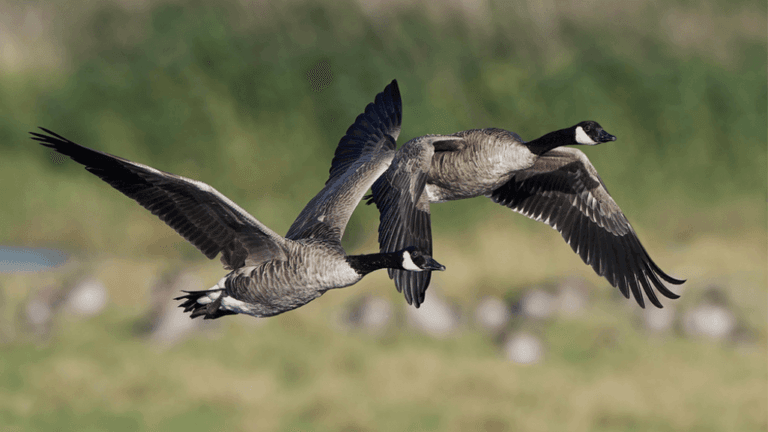Knowing what geese eat is key for wildlife lovers and those with domestic birds. Geese can be found in ponds or meadows, showing different eating habits. Wild geese eat a mix of plants and grains, reflecting the natural world’s variety.
Domestic geese, on the other hand, rely on humans for food. They need a diet rich in greens and special feed to stay healthy. This is important for their size and weight.
Their diet changes with the seasons. In warmer months, they eat fresh greens. In colder months, they prefer grains for energy. Humans can help by giving them the right foods, like sweet corn and leafy greens. But, giving them bread can be bad for them.
It’s important to know what geese naturally want to eat. But, we also need to make sure they get the right food. This balance is key for their health.
Key Takeaways
- Geese spend about 50% of their day looking for food on land and in water.
- Domestic geese eat about 200g of food per day when grass is hard to find.
- Eating a mix of wheat and pellets can help with egg laying, but don’t overfeed.
- Geese don’t have tear ducts, so they need clean water to keep their eyes and nose clean.
- It’s important to limit how much they graze in meadows to protect plants.
- Geese need a diet rich in protein and essential amino acids. Their grain should also have important vitamins and minerals.
- They also need fresh greens and insoluble grit, as well as niacin, to stay healthy.
For both domestic and wild geese, understanding their diet is vital. It’s about finding the right balance between nature and human care. This balance helps these amazing birds stay healthy in their natural and human-made homes.
The Natural Diet of Geese
The natural diet for geese is diverse and changes with their environment. It greatly affects their health and behavior. Knowing what they eat is key for their well-being, whether in the wild or at home.
Grass and Leaves
Geese love to graze, making grasses and leaves their main food, about 80% of it. They eat different grasses like bluegrass and alfalfa, mostly in spring. They use their strong beaks to pick the best parts of plants.
Grains and Seeds
In fall and winter, when grass is scarce, geese eat more grains and seeds. They find leftover grains like wheat in fields. A mix of 20% grains and 80% grass is best for them, experts say.
Aquatic Plants
Geese also eat plants from water. They dive to get sedges and watercresses from muddy waters. These plants are vital for their nutrition and help keep water clean.
To learn more about what geese eat and how they eat, check out studies and advice from experts.
Also, seeing how other birds like Khaki Campbell ducks eat can help us feed geese better. It keeps them healthy and natural.
Seasonal Variations in Diet
Geese change their eating habits with the seasons to get the nutrients they need. Knowing these changes is key for those who want to feed geese all year round.
“Geese show amazing flexibility in their diet to match what’s available, which affects their breeding and migration plans.”
In Spring and Summer, geese eat lots of fresh plants like grasses and water plants. This time is for nesting and raising their young, when they need lots of nutrients. The green plants give them the energy they need for breeding.
The best food for geese in these months is natural greens and grains. This matches their natural diet and helps them grow and stay healthy.
Spring and Summer Feeds
- Abundant grasses and leafy greens
- Aquatic plants and algae
- Small grains and seeds
When it gets colder in Fall and Winter, geese eat more carbs to stay warm and have energy. They eat berries, seeds, and leftover grains from fields. In late fall, they eat a lot to build up fat for migration or to survive in areas with little food.
Fall and Winter Foraging
- Increased intake of grains and berries
- Foraging in harvested agricultural fields
- Utilization of conservation reserve lands
Feeding geese extra food can help during harsh winters when natural food is hard to find. But, it’s important to give them the best food for geese like cracked corn or special waterfowl feed. This helps avoid any bad diet problems.
The changes in their diet are not just for survival. They also show how geese can adjust to different environments. By matching our feeding to their natural patterns, we can help keep geese healthy and support their populations.
Nutritional Needs of Geese
Knowing what nutritional requirements for geese have is key to their health. They need a diet full of nutrients to stay healthy. This diet should give them the energy, vitamins, and minerals they need at every stage of life.
Essential Vitamins and Minerals
Geese have a strong digestive system that needs many vitamins and minerals. Niacin is important for young geese to prevent leg and joint issues. Calcium and Vitamin A help with bone health and vision, found in greens or fortified foods.
When sunlight is scarce, Vitamin D supplements are needed to prevent deficiencies. Adding supplemental dietary grains gives them B vitamins, Vitamin E, and phosphorous. But, grains should only make up 10% of their diet to avoid health problems.
Protein Requirements
Protein is vital for geese, helping build and repair muscles. Their gizzards are designed to break down tough foods, aided by grit for digestion. Plant-based proteins like peas, sunflower seeds, and sweet potatoes are great for them, boosting bone strength.
By choosing the right types of food for geese, we can greatly improve their health. A balanced diet of greens, grains, and proteins, along with essential vitamins and minerals, helps them thrive. This ensures they stay healthy in different environments, adapting well to seasonal changes.
Impact of Environment on Diet
The diet of geese is greatly affected by their surroundings. This shows how important the environment is for their diet. Urban and rural areas have different living conditions. These conditions change the availability of food and the need for human feeding.
Urban vs. Rural Diets
In cities, geese face a different world than their natural habitats. Parks and public spaces offer some grass, but it’s not enough for all geese all year. So, urban geese often eat food given by humans. This can cause health problems like Angel Wing, which makes flying hard because of eating too much bread and popcorn.
Habitat Influence on Food Choices
Rural geese have more access to natural food and water. But, farming and land use changes can harm their diet. Using geese to control weeds on farms can help, but it must be done carefully. This ensures their diet is balanced and their habitat is not damaged.
Both urban and rural areas show how the environment affects geese’s diet. It’s key to manage feeding well to keep geese healthy. This helps them and the ecosystems they live in.
Human Interaction and Feeding Practices
Humans and waterfowl, like geese, have a big impact on each other, mainly in cities. Feeding them can be fun, but it’s key to do it right to help them stay healthy. The Bird Alliance of Oregon says it’s vital to let them live on their own.
Recommended Foods for Domestic Geese
Domestic geese need a diet full of nutrients for growth and health. A good mix includes grains, fresh greens, and grit for digestion. While scratch grains can be fun, they shouldn’t be their main food.
Geese love treats like peas and leafy greens. These are better for them than bread or pastries.
Risks of Improper Feeding
Feeding geese the wrong way can harm them a lot. For example, their digestion is linked to their social life and ability to have babies. A bad diet can make them sick and dependent on humans.
It can also make them gather in big groups, which spreads diseases. To keep them away, we can use things like plants and fake predators. This helps them stay wild and not rely on us for food.
It’s best to watch them from afar and let them find their own food. Learning about ducks like the Rouen Clair shows us why we should respect their natural ways.


